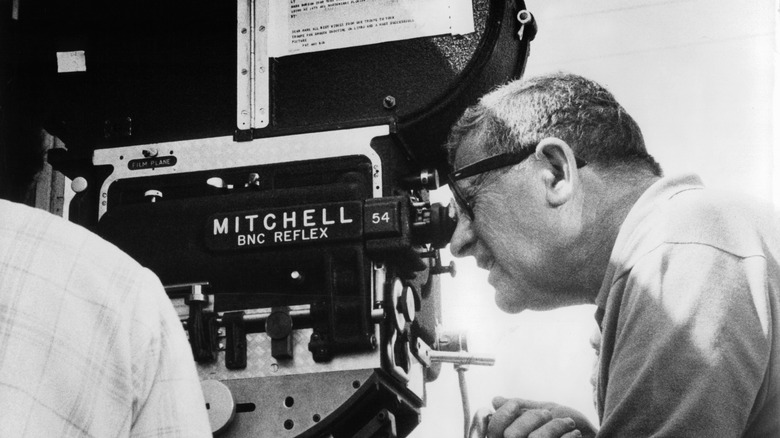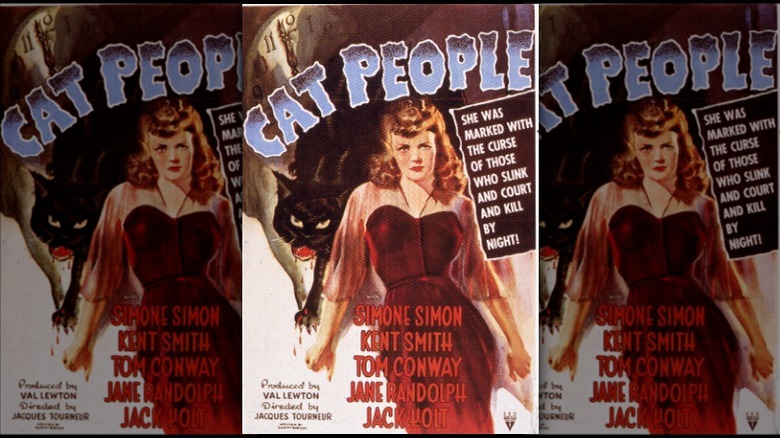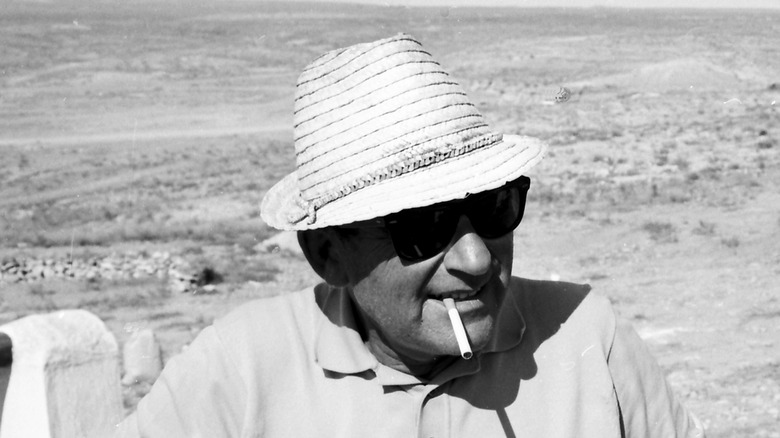The Mastermind Behind The Jump Scare
The jump scare is such a vital part of the horror movie genre that it's hard to imagine a time when it didn't exist. In brief, it's a shot in a film where something unexpectedly and often dramatically appears on screen. If done right, the viewer jumps out of their seat with fright. Interestingly, the first jump scare may have been accidental, according to the man who made it happen in the 1942 RKO Pictures B horror film "Cat People."
Per "British Film Institute Film Classics, Volume 1," Mark Robson, who edited the film, recalled that he had invented the "editing device ... by accident, or possibly by design." It came to be when he ended a high-tension scene in which a woman is followed by someone — or something — through Manhattan's Central Park at night with the sudden appearance of a bus. "From the other side of the park a bus came by, and I put a big, solid sound of air-brakes on it, cutting it in at the decisive moment so that it knocked viewers out of their seats" he recalled.
He worked on Citizen Kane
"Cat People" was Mark Robson's second solo editing job. He had cut his teeth as an uncredited assistant editor on what many critics consider the greatest film of all time, Orson Welles' "Citizen Kane" as well as Welles' next film, "The Magnificent Ambersons." But it was his work with the writer-producer Val Lewton — first as an editor and later as a director — that launched his Hollywood career.
One of his later horror films for RKO and Lewton, 1943's "The Seventh Victim" included a scene that some critics believe influenced Alfred Hitchcock's infamous shower scene in "Psycho," per "Historical Dictionary of Horror Cinema." Throughout Robson's horror film career, he continued to use jump scares. Although he invented it, the name for the specific type of jump scare in which a scene slowly builds up tension before the sudden introduction of what turns out to be something innocuous — in the case of "Cat People," a bus — was named after the film's producer.
He went on to a successful career
The jump scare Mark Robson invented is known as a "Lewton Bus" after producer Val Lewton. Lewton was instrumental in creating a series of stylish and atmospheric horror films for RKO in the 1940s. They broke the mold of the B monster movie genre, relying less on special effects and more on psychology, according to "Nightmare Fuel: The Science of Horror Films." Robson, as both an editor and director, was instrumental in helping Lewton create his brand of horror. With "Cat People," Robson brought his experience working on Orson Welles' films to his editing style and the soundtrack, according to "Fearing the Dark: The Val Lewton Career."
While the jump scare is the payoff, it takes a solid buildup of tension to make it work, and Robson's editing again helped create the sense of foreboding required for the jump scare to have the proper effect. Robson and Lewton, along with "Cat People" director Jacques Tourneur, continued to refine the technique in later films. "In each of these films, we had what we called the 'bus,'" Robson recalled (via "British Film Institute Film Classics, Volume 1"). Robson would go on to direct such non-horror films as 1957's "Peyton Place," 1967's "Valley of the Dolls," and 1974's "Earthquake" before his death in June 1978. So next time you shriek and clap your hands over your eyes during a horror movie, thank Mark Robson for it.


